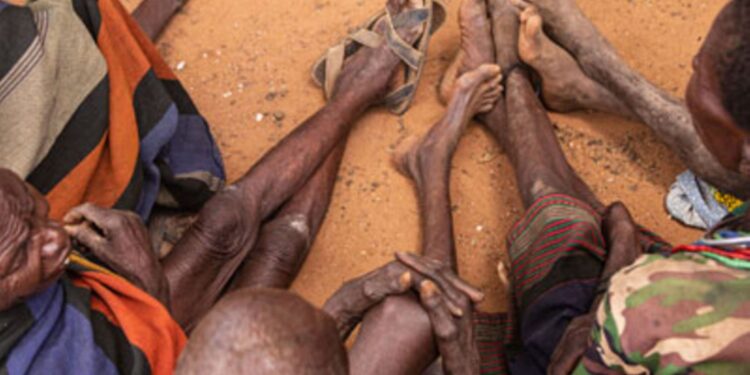Irene Naikaali Ssentongo
All human beings are born free and equal in dignity and rights including the right to food, health, work and education. The inherent nature of every person is creative, resourceful, self-reliant, responsible and productive. We must not treat people living in conditions of hunger as beneficiaries which can crush their dignity, but rather as the key resources for ending hunger.
This is our leadership challenge, the essence of our work at The Hunger Project Uganda. Our vision for ending hunger is inspired by the need to lift up and celebrate human dignity. This means that we identify, appreciate and acknowledge the unique contribution of communities in ending their own hunger and poverty. The Hunger Project Uganda has for the past 24 years been at the center of championing community led development using the epicenter strategy.
The Epicenter strategy is a community led development approach that clusters communities of between 10 to 20 villages to form an epicenter. An epicenter is a dynamic centre for sustainable community action fueled by a common vision of a future without hunger. To date a total of 10 epicenters comprised of about 200,000 people from across 8 districts of Uganda have been declared self-reliant.
Kenshunga epicenter in Kiruhura district and Bulamagi Epicenter in Iganga district are the two most recent epicenters to transition to self-reliance under The Hunger Project Uganda’s Epicenter strategy model. Kenshunga Epicenter’s journey to a sustainable end of hunger began in 2009. This journey was inspired by the community’s need to turn around their hunger situation that was majorly being fueled by the harsh climatic conditons, negative perception of community members towards crop growing, limited access to government supported health care services, inadequate clean and reliable water sources, gender based violence , low access to productive resources especially by women. Similarily, the Bulamagi epicenter community grappled with almost similar challenges including community’s prioritization of sugarcane growing over food crop which was fueling food insecurity and malnutrition especially among mothers and children under five.
The success of The Hunger Project model across all the communities we work hinges on three major pillars. These have continued to serve as the major catalysts for rapid community transformation towards self-reliance.
The first pillar rests on Women as the key change agents in community transformation. Women play a very important role in influencing change both within their own households and community at large. When you empower a woman and inspire self-belief , she ignites an irresistible spark of energy among fellow community members that can never be contained. The Hunger project works around transforming community mindsets around gender equality by recognizing the rights and complementary roles both men and women play in society transformation especially as relates to ending hunger.
The second pillar is Collective leadership. As John Maxwell said, “Everything rises and falls on Leadership” the very people suffering from hunger hold the best solutions to overcoming their deep rooted challenges. This calls for leadership at all levels starting with the individual all through to the national level. Community leaders across all our epicenters are selected by their fellow community members and charged with the responsibility of being the drivers of change in their communities. For example, at Kenshunga, the community is running a vibrant ‘rural bank’ whose loan portfolio has grown from about 90 million in 2020 to about 200 million in just over 2 years. This demonstrates a remarkable spirit of community ownership that could contribute towards strengthening the roll out and implementation of the ongoing Parish Development Model initiative by government.
This government involvement in the epicenter programs points to our final pillar which is building collaborations and partnerships with likeminded institutions such as the local governments, church and other civil society organizations. The land on which the Bulamagi Epicenter building sits was offered by the Catholic Diocese of Jinja as a sign of their commitment and belief in the epicenter strategy and its impact towards faster community transformation.
To end hunger, we see the benefits in amplifying local voices and leadership around the very issues that are creating hunger and causing it to persist within the communities we work with as well as the nation at large. Our leadership role is to support the communities we work with to locate themselves within the hunger web and carefully guide them through the process of disentangling themselves so as to sustainably end their own hunger and poverty.

Irene Naikaali Ssentongo
Country Director, The Hunger Project Uganda.








